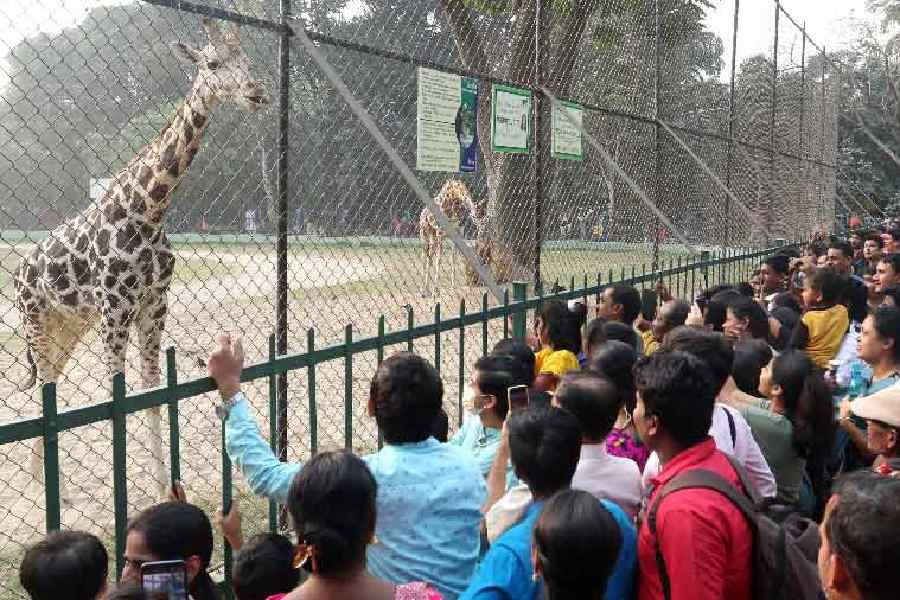One of Calcutta’s most famous addresses, 2 Alipore Road, has achieved a historic milestone: the Alipore Zoological Garden has turned 150 years. A new gate was unveiled at the premises to mark, what the zoo’s legion of admirers — they hail from near and afar — would consider as, a joyous occasion. The time is also just right for the more curious — cerebral — Calcuttan to delve into the zoo’s rich and layered history.
Such an exercise would be both delightful and educative for there are many ways of looking at Calcutta’s zoological garden, India’s oldest zoo. It was, for instance, a creation of the colonial empire, beginning with a number of species donated from the private menageries of rich and famous sahibs and babus. The diversity in the original homes of some of the zoo’s early members — a pair of lions came from Mesopotamia while the giraffes apparently foxed the awe-struck Bengali — is suggestive of the zoo’s cosmopolitan — globalised? — roots. In fact, the zoo’s patrons and employees were a mixed breed, in a manner of speaking, and included not only representatives of the raj but also Germans, Jews, enterprising Bengalis and others. The zoo’s sesquicentennial year could thus be a fitting occasion to learn more about the life and the times of individuals — Sir Richard Temple, Carl Louis Schwendler, C.T. Buckland, Ellias Gubbay, Ram Brahma Sanyal among others — who played a pioneering role in this institution.
Then again, like other zoos, the one at Alipore could well be seen as a subtle testament to nature’s capitulation — supplication — to humanity’s aggressive scientific temper. The captivity of natural species not only for the purpose of learning but also for public display and spectacle is, after all, integral to the fundamental concept of such a menagerie. In the early decades, Calcutta’s zoo achieved international fame for maintaining the highest scientific standards. For instance, it achieved the rare feat of the live birth of a Sumatran rhinoceros as early as 1889. But with time, especially in the latter half of the 20th century, recreation received greater priority than conservation: the zoo’s crossbreeding programme — it has been stopped — between tigers and lions attracted scientific censure for pandering to sensationalism. Cramped cages, poor caring of animals, hostile spectators, whispers of corruption among the staff were also listed among the zoo’s other warts.
Not all of these challenges have been resolved even as the Alipore zoo looks towards its future. It can be argued that many of these problems are not unrelated to a central policy dilemma: should a zoo be conceived as a site of public recreation or of education and conservation? The answer lies in changing the way in which the institution understands the concept of public recreation. There is nothing to suggest that an educational visit to the zoo to learn about species, their behaviour, their endangered lives, in a meaningful manner cannot be an exercise in recreation for adults and the young. Some of the best zoological parks in the world have made this transition and now serve as excellent centres of learning and conservation. Calcutta’s zoo must upgrade its facilities and march in this desirable direction. That would lend the zoo and its enchanting residents longevity and purpose.










